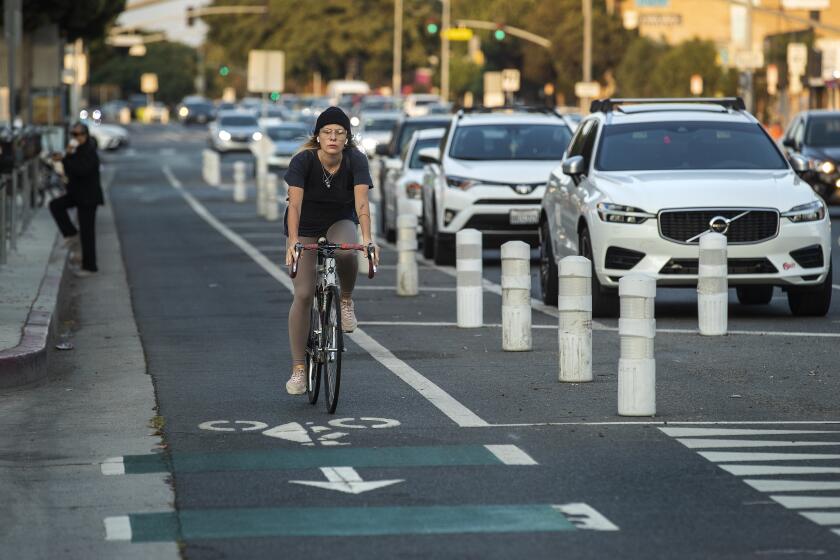Pasadena Freeway getting a new look and a new name
- Share via
The Pasadena Freeway? That’s so yesterday.
Like stars here often do, Los Angeles’ oldest freeway is getting a face-lift.
The storied roadway is receiving new lighting, an improved center divider and decorative low walls along its shoulders. And to commemorate the changes, the California Department of Transportation has decided to rechristen the Pasadena Freeway back to its old name: The Arroyo Seco Parkway.
It’s a return to its roots for the eight-mile stretch of highway that connects Pasadena with downtown Los Angeles.
The roadway was called the Arroyo Seco Parkway when its first six-mile section between Pasadena and Avenue 22 opened in 1940.
That first segment was a marvel of highway engineering when construction began in 1938. Besides being a vital transportation link, it was hailed as a scenic wonder that was landscaped with native plants and trees along its stone-accented shoulders.
According to the Historic American Engineering Record, the parkway was declared to be the “first freeway in the West” by then-Gov. Culbert L. Olson.
After an interruption by World War II, the highway was completed with a two-mile extension that reached what is now the downtown four-level interchange. By the time that stretch opened in 1953, Los Angeles’ freeway system was being mapped out and the highway became known as the Pasadena Freeway. Later, it was called the 110 Freeway by many.
Postwar growth forced engineers to embrace the “stripped-down esthetics which would characterize much subsequent freeway development,” according to the Engineering Record.
With its tight curves, narrow lanes and short on- and off ramps, the original Arroyo Seco Parkway was built to handle about 27,000 cars a day, according to historians. These days, its six lanes carry about 122,000 vehicles.
The new medians, barriers and lighting are designed to improve safety and enhance the scenic feel of the road, said Judy Gish, spokeswoman for Caltrans. Decorative concrete center dividers and rock-like side walls topped by fencing will replace metal guardrails, she said.
The new name is intended to reflect the state Legislature’s decision in the early 1990s to commemorate the highway by designating it a “California Historic Parkway,” she said. In 1999, the American Society of Civil Engineers named the initial segment a national engineering landmark.
The new “Parkway” signs are being erected along the 5 Freeway between the 2 Freeway and 1st Street; along the 101 Freeway from Alvarado Street to Soto Street; and on the 110 Freeway between Wilshire Boulevard and Pasadena.
The signs will cost about $650,000 and take three months to install; the other improvements will cost $17 million and should be finished by next spring, Gish said.
Those who travel on the freeway-turned parkway say they welcome the new walls and lighting. But some are less enthusiastic about the name change.
“The name should stay the same, Pasadena Freeway,” said Margo Seguria of Montecito Heights. “Of course, we know freeways by their numbers. Our parents were the ones who knew them by name.”
Ignacio Solis of East Los Angeles agreed. “Pasadena is where it goes. I don’t see the point in calling it something else,” he said.
The new signs are a waste of $650,000, said Miguel Mendoza, also of East Los Angeles.
“In this economy why spend money on something like that? Leave it like it is,” Mendoza said.
More to Read
Sign up for Essential California
The most important California stories and recommendations in your inbox every morning.
You may occasionally receive promotional content from the Los Angeles Times.










